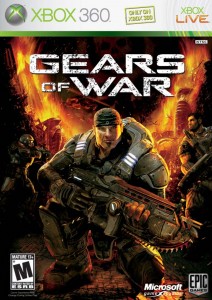**Originally posted on levelsave.com **
 Overall Rating: 3
Overall Rating: 3
Educational Value: 6
Age Appropriateness: 2
Enjoyment Factor: 1
 Overall Rating: 3
Overall Rating: 3Educational Value: 6
Age Appropriateness: 2
Enjoyment Factor: 1
I am a great lover of childrens’ literature. I have rows upon rows of picture books intended for an array of age ranges, and I can often be caught with my nose in some beautifully illustrated fairy tale or pop-up books of dinosaurs. My collection of books is steadily growing larger, and they are practically used in my work with small children all the time. There are a few programs that I am enamoured with as well. Good childrens’ interactive fiction (and non-fiction) is useful in educating kids, has replay value, challenges the child, and even remains fun, and that’s exactly what Jolly Blast: Soccer tries to achieve. Unfortunately, this app falls flat in several of these areas.
Jolly Blast: Soccer is well-intentioned and educational, but doesn’t serve to capture the imagination or even hold attention. It’s purpose is to teach it’s users about the basic concepts of soccer, as well as the vocabulary used. It does this aptly with the more interactive pieces of the program. There is a glossary of soccer terms which is quite informative, and one bit where shapes are associated with different parts of the soccer field which goes into more detail about rules. These parts are well-done from an educational perspective, but they have none of the fun involved in capturing and holding the attention of children. These good pieces are more a reference that can be checked for definitions and clarifications.
Where this app falls flat is in the fun and replay value, as well as the lack of attempt to put forth any appropriate challenge to the child. First, the font is too small to be read on my iPhone. I found that both my daughter and I had to squint to read some of the text, and some of the dialogue bubbles were nearly unreadable for their tininess. I would have been happy if there was a font-scaling function, so that if this game is bought on an iPhone 3GS (which does not have as high a resolution as the iPad or iPhone 4) it wouldn’t be nearly impossible to read. There is also the problem of the main story’s length, amount of text on each page, and the complexity of the language being used. It would seem to me that the content within this story is aimed at very young readers, but the sophistication of the actual words on the screen would be more suited to someone with a bit more aptitude in the art of reading. This can lead to either a frustrated younger one or a bored (or worse, insulted!) older child. The saving grace here was the voice-over function, which allowed the user to listen to the story audibly. This will ease some of our child’s frustration, but won’t allow him to practice his reading.
Also, children know how to use iPhones. The controls are as intuitive as shuffling papers around on a desk. Swiping to go to the next page, or to trigger an event on-screen in this kind of app is a no-brainer. Children will utilize their current understanding of how an iPhone works and try these things out first. The problem here is that Jolly Blast: Soccer does not utilize this native control scheme. I found myself tapping nearly everything, even when the item on-screen needed to be dragged across a surface or when I needed to flip pages. The tap-detection boxes are very, very small, as well. I was constantly double- and even triple-tapping one of the sparkling auras which signify an interactive item. This led to more frustration and even anger on the part of my daughter. iOS devices are expensive things, and personally, I wouldn’t want an angry child holding my $500 piece of hardware.
 Tony Gonzalez, Tight End for the Atlanta Falcons is featured in this game. He has a video that can be navigated to via the main UI in which he details.. something. And here’s the thing, the audio for the video is much, much too quiet to hear. This negates much of what makes having an iconic sports presence in the app a benefit, and is yet another satellite of frustration orbiting this dead rock of an app.
Tony Gonzalez, Tight End for the Atlanta Falcons is featured in this game. He has a video that can be navigated to via the main UI in which he details.. something. And here’s the thing, the audio for the video is much, much too quiet to hear. This negates much of what makes having an iconic sports presence in the app a benefit, and is yet another satellite of frustration orbiting this dead rock of an app.None of this even mentions that there is no part of this game in which either my daughter or I were having any fun. This game is simply no fun at all. Well.. We did make fun of it a little bit, and that was quality father-daughter bonding.
Honestly, I can’t recommend this game less. Not only does it fall flat on it’s face in most respects, it also confuses it’s intended age level. I can’t even tell you which age this app is really intended for, and I have been to school to learn all about child development. Don’t waste the $1.99 required to own this interactive story. Put that money towards either a good, informational book about soccer, or just get your child a real ball.
The Jolly Blast website can be found here.





